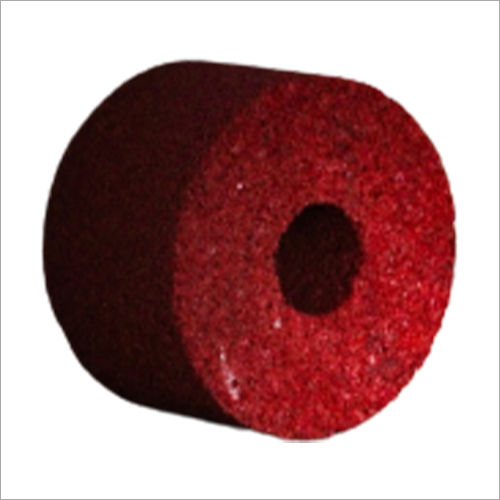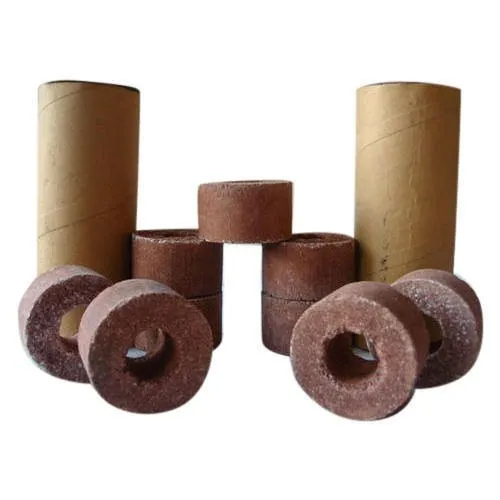Degasser Tablets
1500.00 INR/Bag
Product Details:
X
Degasser Tablets Price And Quantity
- 1500.00 INR/Bag
- 1 Piece
Degasser Tablets Trade Information
- Cash in Advance (CID)
- 100 Piece Per Month
- 18 Days
- Free samples available with shipping and taxes paid by the buyer
- Pieces in HDPE liners in the Box
- Asia Central America Western Europe Middle East Eastern Europe
- All India
- IEC, GST, MSME
Product Description
D-Gas Tablets
To guarantee maximum contact area with liquid metal, D-gas is made up of a granular substance that has been firmly bound and shaped into a weighted unit with a high surface area to volume ratio.
Molten copper and copper-based alloys can be degassed using D-gas. Through a steam reaction, dissolved hydrogen and cuprous oxide interact to generate water vapour in copper and copper base alloys. As the temperature drops, hydrogen's solubility in copper and its alloy melts decreases until the gas reaches solid solubility. After deoxidation, the hydrogen that is released from the solution tends to mix with extremely low levels of cuprous oxide; hydrogen may still be an issue, therefore it is best to minimise it to very small amounts. The simplest and most efficient method is to create a stream of hydrogen-scavenging gas that bubbles through the melt and doesn't react with the alloy being treated. D-gas units are made of a mixture of chemicals that break down when they come into touch with molten metal, producing a continuous, constant stream of non-reactive gas. Since D-gas is very carefully dried and packed, the gas bubbles contain very little hydrogen and are able to flush out that gas and carry it to the surface where it is lost to atmosphere
APPLICATION:
DIRECTIONS FOR USE: D-Gas units are annular in shape and have a central hole that may be filled with a straightforward steel plunger that has been thoroughly cured and coated with refractory. a) Decomposed under the influence of a rough flux such as FLUXIT. c) Drop the D-Gas units to the melt's bottom to degas. Hold this position until the bubbling effect completely goes away. By doing this, the developed gas bubbles and melt would have the longest possible contact time, resulting in effective hydrogen elimination. c) At least three minutes should pass throughout the degassing process. The temperature drops by 10 to 15 degrees Celsius as a result. Therefore, it is necessary to permit a proportionately higher degree of superheat.
Molten copper and copper-based alloys can be degassed using D-gas. Through a steam reaction, dissolved hydrogen and cuprous oxide interact to generate water vapour in copper and copper base alloys. As the temperature drops, hydrogen's solubility in copper and its alloy melts decreases until the gas reaches solid solubility. After deoxidation, the hydrogen that is released from the solution tends to mix with extremely low levels of cuprous oxide; hydrogen may still be an issue, therefore it is best to minimise it to very small amounts. The simplest and most efficient method is to create a stream of hydrogen-scavenging gas that bubbles through the melt and doesn't react with the alloy being treated. D-gas units are made of a mixture of chemicals that break down when they come into touch with molten metal, producing a continuous, constant stream of non-reactive gas. Since D-gas is very carefully dried and packed, the gas bubbles contain very little hydrogen and are able to flush out that gas and carry it to the surface where it is lost to atmosphere
APPLICATION:
DIRECTIONS FOR USE: D-Gas units are annular in shape and have a central hole that may be filled with a straightforward steel plunger that has been thoroughly cured and coated with refractory. a) Decomposed under the influence of a rough flux such as FLUXIT. c) Drop the D-Gas units to the melt's bottom to degas. Hold this position until the bubbling effect completely goes away. By doing this, the developed gas bubbles and melt would have the longest possible contact time, resulting in effective hydrogen elimination. c) At least three minutes should pass throughout the degassing process. The temperature drops by 10 to 15 degrees Celsius as a result. Therefore, it is necessary to permit a proportionately higher degree of superheat.
Tell us about your requirement

Price:
Quantity
Select Unit
- 50
- 100
- 200
- 250
- 500
- 1000+
Additional detail
Mobile number
Email
Other Products in 'Degasser Tablets' category
 |

 Send Inquiry
Send Inquiry


